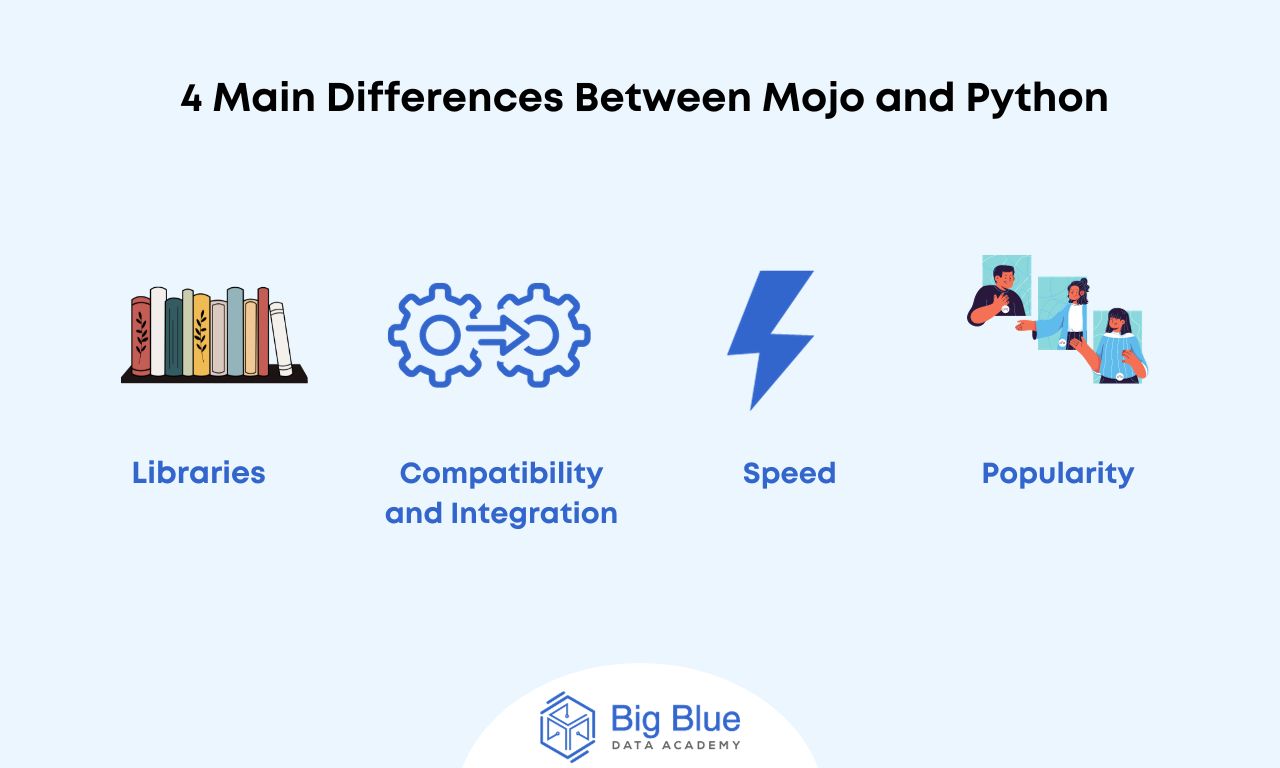Mojo vs Python: The Main Differences (2024)
With the continuous advancements in the field of artificial intelligence, the need for programming languages capable of meeting the growing demands for scalability, speed, and autotuning is driving companies to develop new programming languages.
One such company that ventured into creating a new programming language in 2023 for this purpose is Modular.
The language they developed is named Mojo and shares many common elements with Python, which has been a dominant force in fields like Data Science and Machine Learning for years.
So, in today's article, we will explore:
- What is Python?
- What is Mojo?
- The key differences between them
- Which one to choose based on your needs
Let's start with two basic definitions.
What is Python?
Python is a popular high-level object-oriented programming language developed in February 1991 by Guido Van Rossum. It is a versatile language with built-in data structures and dynamic properties.
Python is widely used in various fields, including application development, machine learning, and AI.
Notable applications built with Python include Uber, Spotify, and Reddit.
Moreover, it is an interpreted language with a garbage collector for memory management.
What is Mojo?
Mojo is a programming language that first appeared in 2023.
Developed by the company Modular, created in 2022, Mojo supports both just-in-time (JIT) and ahead-of-time (AOT) compilation.
As mentioned on the Modular site itself, the original purpose was not to create a new programming language.
However, later due to the growing needs for a language with strong compile-time metaprogramming and caching throughout the compilation stream, they created Mojo.
Mojo has a lot in common with Python, from which its creators were inspired as it is the dominant language in the artificial intelligence ecosystem.
Mojo has a similar syntax to Python and in the future the goal is to be a superset of Python.
Now that we've covered some basic aspects of these two programming languages, let's proceed to examine their fundamental differences.
Mojo vs Python: 4 Key Differences
Python and Mojo differ significantly in the following features.

Difference #1: Libraries
Python boasts an extensive ecosystem of libraries and frameworks, such as TensorFlow, NumPy, Pandas, and PyTorch, with over 137,000 libraries.
Mojo has a developing library ecosystem but significantly lags behind Python in this regard.
Difference #2: Compatibility and Integration
Python is known for its compatibility and integration with various programming languages and third-party packages, making it flexible for projects with complex dependencies.
Mojo, while generally interoperable with Python, falls short in terms of integration and compatibility with other tools and languages.
Difference #3: Speed
Mojo is designed for high-performance tasks through innovative compiler technologies like embedded caching, multithreading, and cloud distribution.
It is compiled and generally faster than Python, which is an interpreted language.
However, Python's speed and performance can be significantly enhanced through the use of libraries like NumPy and pandas.
Difference #4: Popularity
Python is a highly popular programming language with a large community of developers and data scientists.
Mojo, being introduced in 2023, has a much smaller community and popularity compared to Python.
It is not yet open source, has limited documentation, and is targeted at developers with system programming experience.
According to the TIOBE Programming Community Index, a programming language popularity index, Python consistently holds the top position.
In contrast, Mojo is currently ranked 174th and has a long way to go.
Ramping Up
So we talked in detail about Python and Mojo, analyzing the differences between them.
Python is a popular language and easy to learn, especially for someone new to programming or data science.
On the other hand, Mojo is a new language with several shortcomings but is gradually growing.
If you want to learn more about Python, the most popular programming language, follow us and we will keep you posted!


.jpg)